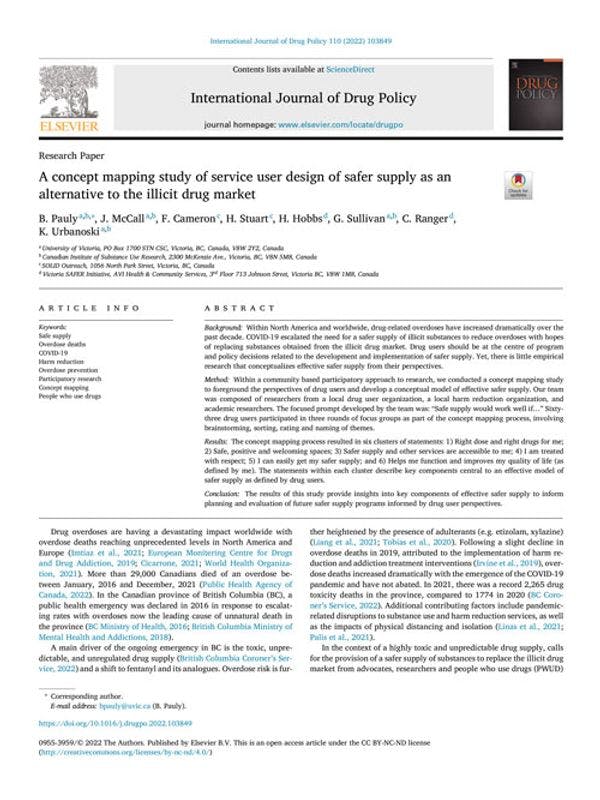Une étude de schématisation conceptuelle de la manière dont les utilisateurs de services conçoivent un approvisionnement plus sécurisé comme alternative au marché illégal des drogues
Pauly et al. identifient les attentes, y compris en ce qui concerne les substances, la qualité du service, son accès et les résultats escomptés. Pour en savoir plus, en anglais, veuillez lire les informations ci-dessous.
By B Pauly, J McCall, F Cameron, H Stuart, H Hobbs, G Sullivan, C Ranger, K Urbanoski / International Journal of Drug Policy
Abstract
Background: Within North America and worldwide, drug-related overdoses have increased dramatically over the past decade. COVID-19 escalated the need for a safer supply of illicit substances to reduce overdoses with hopes of replacing substances obtained from the illicit drug market. Drug users 1 should be at the centre of program and policy decisions related to the development and implementation of safer supply. Yet, there is little empirical research that conceptualizes effective safer supply from their perspectives.
Method: Within a community based participatory approach to research, we conducted a concept mapping study to foreground the perspectives of drug users and develop a conceptual model of effective safer supply. Our team was composed of researchers from a local drug user organization, a local harm reduction organization, and academic researchers. The focused prompt developed by the team was: "Safe supply would work well if…" Sixty-three drug users participated in three rounds of focus groups as part of the concept mapping process, involving brainstorming, sorting, rating and naming of themes.
Results: The concept mapping process resulted in six clusters of statements: 1) Right dose and right drugs for me; 2) Safe, positive and welcoming spaces; 4) I am treated with respect; 5) I can easily get my safer supply; and 6) Helps me function and improves my quality of life (as defined by me). The statements within each cluster describe key components central to an effective model of safer supply as defined by drug users.
Conclusion: The results of this study provide insights into key components of effective safer supply to inform planning and evaluation of future safer supply programs informed by drug user perspectives.
Téléchargements
Régions
Profils associés
- International Journal of Drug Policy
